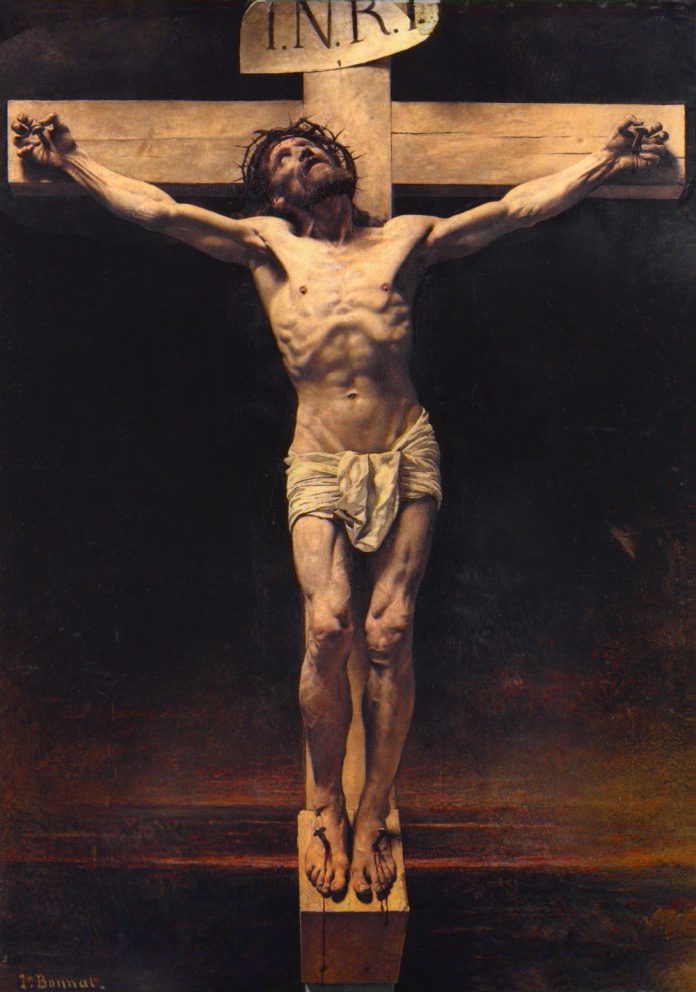Cardinal Newman, now Saint John Henry Newman, was a towering figure of nineteenth-century Catholicism who is almost universally admired. I say “almost” because not everyone likes him. I knew a priest once, Arthur Caulkins, who has become disenchanted with Newman. As an undergraduate Arthur had been enamoured of Newman, and this interest continued when he did his master’s. But by the time he was working on a doctorate, his esteem for the great man had soured: “There’s no good news in the Gospel of Newman,” he used to say. His PhD thesis became an exposé, and, although his supervisor tried to discourage him, he insisted on taking his oral examination. Not surprisingly, he failed, another instance, he would say, of Newman’s pernicious influence. Any of you who have read Newman will have to admit that Father Caulkins had a point; it’s grim stuff. Like Saint Augustine, Newman had a dark view of human nature:
The disappointments of life, the defeat of good, the success of evil, physical pain, mental anguish, the prevalence and intensity of sin, the dreary hopeless irreligion, that condition of the whole race, so fearfully yet exactly described in the Apostle’s words, “having no hope and without God in the world,”—all this is a vision to dizzy and appal; and inflicts upon the mind the sense of a profound mystery, which is absolutely beyond human solution.[1]
In particular, Newman was acutely aware of the fact that sin has consequences that can spread far and wide, like ripples moving out from the centre of a splash or, better, like a tsunami springing from an earthquake in the ocean bed. His example, typical of his time, is the power of the printed word, but we can easily extrapolate his comments to cover television, the internet, blogs, Facebook and other electronic perversities. Here’s a powerful, alarming and frightening passage from one of his sermons:
A man publishes an irreligious or immoral book; afterwards he repents. What does Reason, arguing from the visible course of things, suggest concerning the efficacy of that repentance? [How can mere repentance halt the pernicious influence of the book? No,] [t]he sin of the penitent lives; it continues to disseminate evil; it corrupts multitudes. They die, many of them without repenting. . . . Surely, no evidence is here, in the course of Divine Government, of the efficacy of repentance. Shall he be now dwelling in Abraham’s bosom, who hears on the other side of the great gulf the voices of those who curse his memory as being the victims of his sins?[2]
Each of us can, I believe, with fear and trembling, adapt this passage to his own history. And the more sincere our repentance, the greater will be our desire to overcome the effects of our wrongdoing. If only it could be done! No expense would be too great, no suffering too intense—even death itself—if only we could by such means expiate the evil effects of our actions. Civil law itself honours this principle by, e.g., assigning so many hours of community service as compensation for even relatively minor offences. But no such actions can restore a lost reputation or bring a victim back to life. “What,” Newman asks, “shall be said to this heart-piercing, reason-bewildering fact?”[3]
What shall be said, indeed? Only God can erase the past; only an infinite being can cancel an infinite debt. Our faith tells us that Christ has, in his own person, human and divine, accomplished the miracle of our redemption. But how? As I have noted above, an awareness of sin and its consequences instinctively convinces us of the necessity of suffering, freely embraced, in overcoming the evil effects of sinful actions. If expiation be possible at all, it will be accomplished only by some such means. That is why God the Father, in Saint Paul’s words, “for our sake made [Jesus] to be sin who knew no sin,”[4] and as such he bore the full brunt of the consequences of mankind’s sins. We have here an aspect of the doctrine of the mystical body. We’re used to thinking of grace and redemption flowing from Christ, the head, to us, his members, like branches, receiving life-giving sustenance from the vine. But the influence moves in both directions, and our weaknesses, our sins, our misery, affect Christ, the head of the body. Furthermore, the joint action of Jews and gentiles in bringing Jesus to agony and death points to the fact that both will be saved by the very action that they perpetrated: the entire human race is complicit; the entire human race is saved. The sufferings of Jesus are like rays of light being focused by a lens to a single point. All the pain, all the effects of sin in human history are brought to bear on this single sacred action. As borne by him they lose their power to harm, washed away in the torrent of blood and water the flowed from Christ’s open side.
One knows that the story cannot end on Good Friday. Such a dramatic event, the summation of human history, before and after, has to have been recognized and its effect propagated. The Letter to the Romans tells us how: “We were buried with him by baptism into death, so that, as Christ was raised from the dead by the glory of God the Father, we too might walk in newness of life.”[5] Sacramentally, and therefore truly, we re-enact Christ’s death and resurrection by our baptism. Saint Peter expresses its effects even more vividly: “Through [Christ] we may escape from the corruption that is in this world . . . and become partakers of the divine nature.”[6] Empowered by the Spirit of Jesus, let us henceforth “lead a life worth of the Gospel of Christ.”[7]a
[1] Apologia, chapter 5.
[2] University Sermons, no. 6, para. 19.
[3] Apologia, chapter 5.
[4] 2 Cor 5.21.
[5] Rom 6.4.
[6] 2 Pet 1.4.
[7] Phil 1.27.











